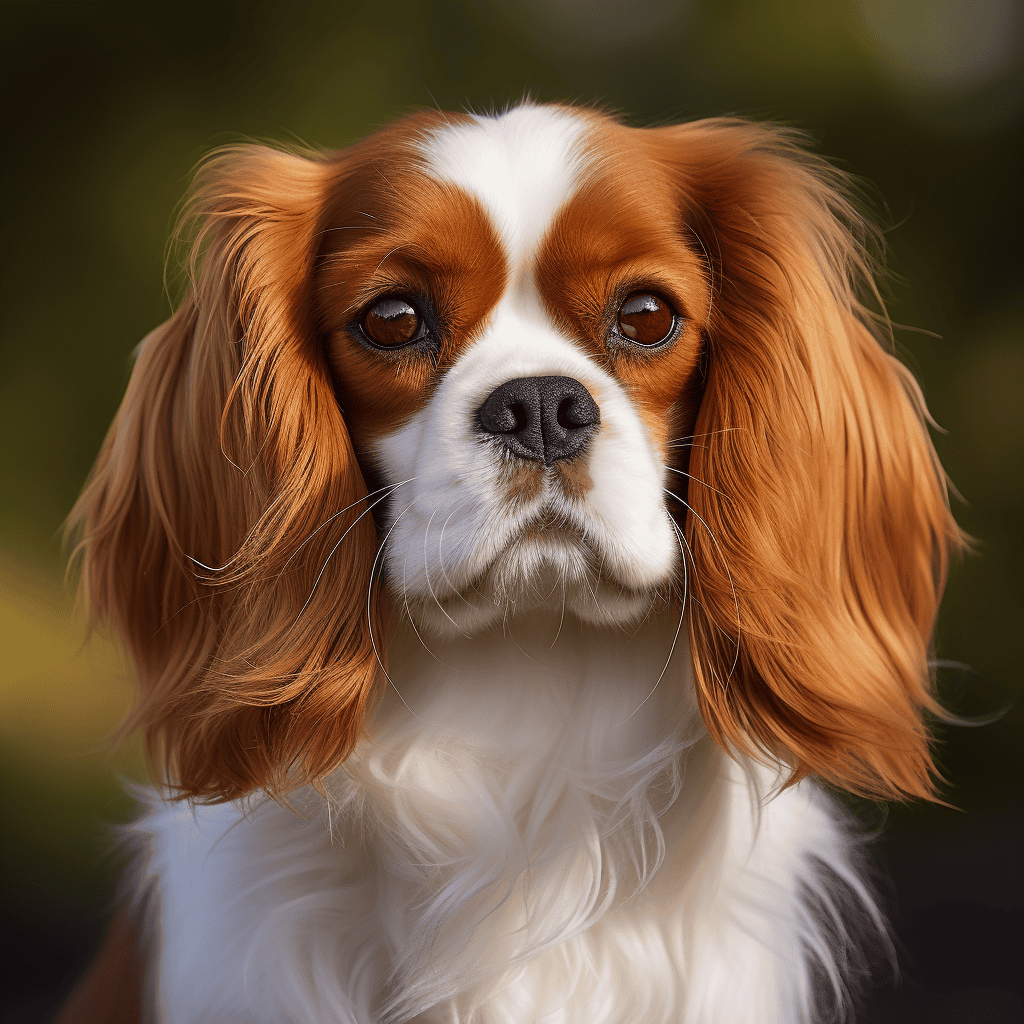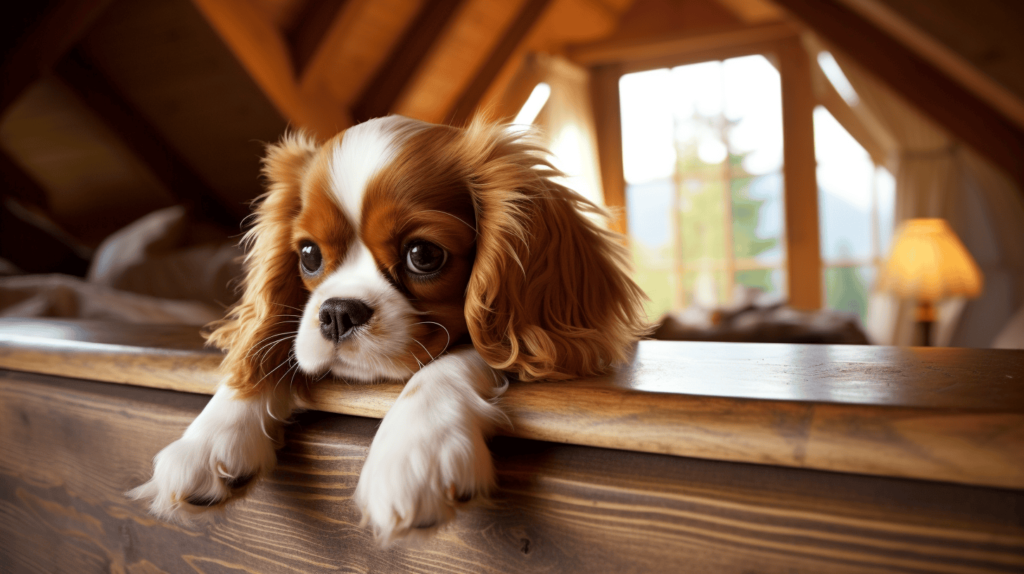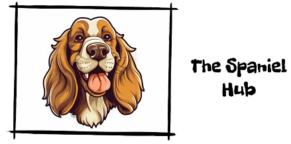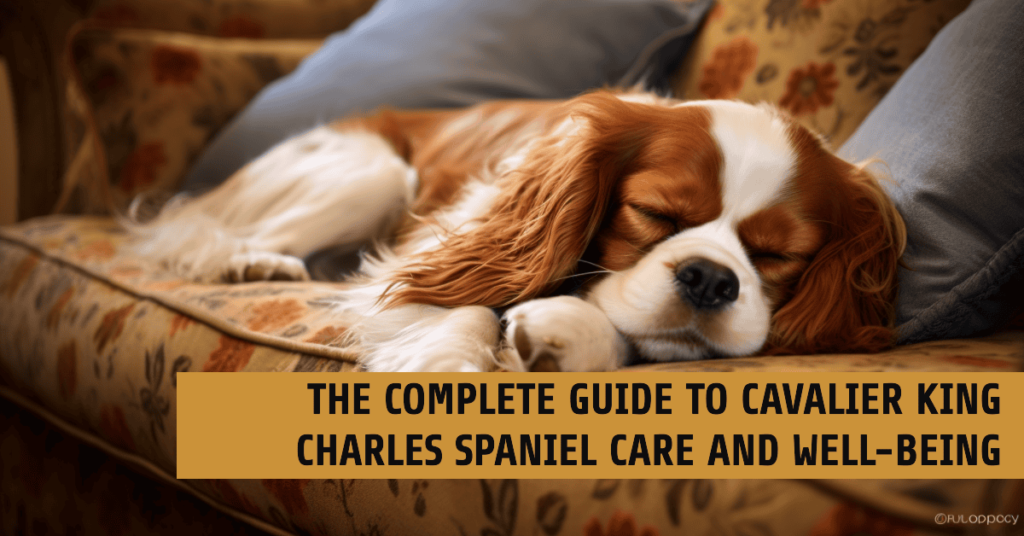Table of Contents
Prepare to be captivated by the expressive eyes, charming personality, and elegant demeanor of the Cavalier King Charles Spaniel. These enchanting dogs have stolen the hearts of dog lovers worldwide. However, to truly cherish and care for these splendid companions, one must possess the essential ingredients: knowledge, dedication, and an abundance of love. In this comprehensive guide, we will embark on a journey into the realm of Cavalier King Charles Spaniel care, uncovering the secrets to providing them with the nurturing they deserve.
Origins and History
Delving into the origins of the Cavalier King Charles Spaniel, we embark on a journey that transports us to the stately halls of British royalty. The breed, as we know it, traces its lineage back to the court of King Charles II of England, after whom they’re named. It’s fascinating to note that their bond with nobility doesn’t end with the name alone.
If you’ve ever chanced upon 17th-century paintings, especially those depicting royal scenes, you’ll likely spot a familiar face: that of a Cavalier King Charles Spaniel. These charming little dogs were immortalized on canvas by notable artists of the time, their expressive eyes and luxurious coats speaking volumes about their treasured status.
From Palace to Household
In the splendid days of yore, Cavaliers were more than mere pets. They held a special place in the hearts of nobility. Whether it was a grand ball or a quiet evening by the fire, these dogs were there, happily frolicking around palaces and castles. Their popularity was such that many nobles even issued decrees, allowing these dogs access to public places where dogs were usually forbidden.
Fast forward to the present day, and the landscape may have changed, but the appeal of Cavaliers hasn’t. These days, instead of sprawling palaces, you’re more likely to find them in comfortable homes. They may not have a court to rule, but they certainly reign supreme in the hearts of their human families.
Legacy and Breeding
In the late 1920s, American Roswell Eldridge offered a cash reward to any British breeder who could reproduce the “old world” type Spaniels depicted in historical paintings. Thus, the modern Cavalier King Charles Spaniel, as we know it, was developed and bred back into existence.
Characteristics and Personality
Visualizing a Cavalier is much like imagining a living, breathing work of art. There’s a captivating beauty about them, the kind that catches your eye and tugs at your heart. Their physical characteristics contribute much to this allure, with each trait uniquely charming and endearing.
Distinctive Appearance
Cavaliers’ gleaming, dark eyes are their windows to the world, often reflecting a gentleness that’s characteristic of the breed. Then there’s the silky, medium-length coat that graces their compact, yet sturdy bodies. This coat comes in an array of colors: Blenheim (chestnut and white), Tricolor (black, white, and tan), Black & Tan, and Ruby. A Cavalier’s coat is more than just a mantle of beauty; it’s a testament to their royal lineage and breed history.
These dogs are compact and sturdy, belying the delicate elegance they exude. They’re a marvel of canine design, with their proportionate bodies and graceful movements, embodying a harmonious blend of strength and elegance.
The Heart of Gold
While their physical traits may draw you in, it’s their personality that truly captivates. There’s a heart of gold within each Cavalier. They are well-known for their friendly disposition, their ability to adapt, and their abundant affection. Their warm, accepting nature and eagerness to form connections set them apart in the canine world.
Cavaliers are not just friendly—they’re sociable to a fault. They’re the kind of dogs who will happily greet your postman, seek pats from your neighbor, or even try to befriend the occasional squirrel in the park. This social inclination doesn’t stem from over-exuberance, but rather a genuine love for companionship, whether human or animal.
Basic Care Requirements
The joy of sharing your life with a Cavalier King Charles Spaniel also comes with the responsibility of meeting their basic care needs. Though small in size, these dogs have certain requirements that can be met with a dash of knowledge and a pinch of dedication.
Nutrition
Firstly, there’s nutrition. Don’t be fooled by their petite size; Cavaliers can have an appetite that would surprise you. Their dietary needs should be met with high-quality, balanced food that’s rich in all the essential nutrients. Whether you choose to feed them commercial dog food or a home-prepared meal, it’s vital to maintain variety and balance. Protein, carbohydrates, fats, vitamins, and minerals – they all play crucial roles in keeping your Cavalier healthy and active.
A word of caution though: Cavaliers are prone to obesity. Monitor their food intake and make sure that their love for food doesn’t tip the scales.
Exercise
Next up, we have exercise. Cavaliers are spaniels, a lineage that gifts them a certain spring in their step and a zest for life. They thrive on physical activity and mental stimulation, both of which can be achieved through daily walks and playtime.
A brisk walk around the neighborhood or a romp in the local dog park can be just what a Cavalier needs to burn off energy. Playtime is also a great opportunity for you to bond with your Cavalier while keeping them mentally and physically fit. Remember, a tired dog is a happy dog.
Grooming
Last, but certainly not least, is grooming. A Cavalier’s beautiful, silky coat requires regular maintenance to keep it tangle-free and shiny. A good brushing every couple of days not only keeps the coat healthy but also reduces shedding and prevents matting.
Additionally, grooming sessions can serve as a wonderful bonding time between you and your Cavalier. Many dogs come to enjoy the sensation of the brush, as well as the undivided attention from their favorite person.

Health Considerations
When it comes to the health of Cavalier King Charles Spaniels, there are certain breed-specific considerations that should not be overlooked. Despite their vivacious spirits and boundless energy, Cavaliers, like all breeds, are predisposed to certain health issues. Understanding these conditions helps in the early detection, appropriate management, and ensuring a healthy, high-quality life for these furry friends.
Mitral Valve Disease (MVD)
One such condition is Mitral Valve Disease (MVD). This heart condition, unfortunately, is rather prevalent in Cavaliers. It involves the deterioration of the heart’s mitral valve, which can eventually lead to heart failure. Regular vet check-ups can help detect signs of MVD early, and with the right management plan, dogs with MVD can lead comfortable, enjoyable lives.
Syringomyelia (SM)
Another health concern for Cavaliers is Syringomyelia (SM), a condition characterized by the formation of fluid-filled cavities within the spinal cord near the brain. This condition can manifest in mild to severe symptoms, such as discomfort, pain, and weakness in limbs.
The possibility of these conditions might seem frightening, but it’s important to remember that being informed is being prepared. Regular veterinary check-ups, early detection, and following appropriate management plans can go a long way in ensuring that your Cavalier leads a healthy and comfortable life.
Training and Socialization
When we delve into the world of training Cavalier King Charles Spaniels, we find that their intelligence and eagerness to please make them incredibly receptive to learning. They take joy in the process, turning ordinary activities into opportunities for both training and bonding.
Training: A Game of Patience and Consistency
Cavaliers are quick learners, a trait that allows them to turn a simple game of fetch into an obedience training exercise. They’re astute observers and good listeners, enabling them to catch onto commands and cues with surprising swiftness. It’s crucial to remember, though, that training is a process that requires patience and consistency.
With Cavaliers, as with any breed, it’s important to make the learning process fun and engaging. A game-like approach to training not only holds their interest but also makes the lessons more memorable. Using their favorite toys or introducing new tricks into playtime can keep training sessions fresh and exciting.
Socialization: More Than Just a Playdate
For these friendly canines, a visit to the dog park isn’t merely a playdate—it’s a vital chance to socialize and adapt to various situations and environments. Socializing your Cavalier from a young age can help them develop into well-rounded, confident dogs. They’ll learn how to interact positively with other dogs and people, improving their social skills and reducing the likelihood of behavioral issues.
Positive Reinforcement: The Key to Success
Perhaps the most critical component of training and socializing Cavaliers is positive reinforcement. This breed is sensitive by nature and responds best to positive, encouraging methods of training. Rewarding good behavior with praise, affection, or their favorite treats can motivate them to learn and repeat those behaviors.
Remember, your Cavalier will likely jump through hoops (sometimes literally!) for a word of praise or a tasty treat. It’s this positive association that will make them look forward to training sessions, and facilitate their growth into well-behaved, sociable companions.
Living with a Cavalier King Charles Spaniel
Living with a Cavalier King Charles Spaniel is akin to having a small, sprightly bundle of joy that never fails to amuse, entertain, and occasionally challenge you. Sharing your life with these endearing dogs means that your home becomes not just your own sanctuary, but also a Cavalier’s paradise.
Life with a Cavalier is punctuated with their charming antics. Be it their playful pounces on an unsuspecting toy, or their uncanny knack for finding the comfiest spot on your couch, their actions will often leave you laughing. In fact, their infectious joy and indefatigable spirit can make even the dullest days seem brighter.
Companionship: A Two-Way Street
Cavaliers have a deep-seated need for companionship. Their ideal day involves being by your side, partaking in your daily activities, and providing an audience of one for your every endeavor. This constant need for company may test your multitasking skills, but it also provides you with an unwavering source of affection and companionship.
Turning Your Home into a Cavalier’s Paradise
When a Cavalier becomes a part of your family, your home naturally morphs into their playground. This transformation involves prioritizing safety while also ensuring fun. Dog-proofing your house to eliminate any potential hazards is essential, as is creating spaces for them to enjoy and explore.
Strategically placed dog toys can keep them entertained, while comfortable sleeping spots offer them a place to rest after their playful exertions. Remember, a Cavalier loves a good view of the outside world. An unrestricted view of a garden or street can provide them with hours of entertainment.

Adoption Tips
If you’ve decided that a Cavalier King Charles Spaniel is the perfect companion for you, you’re about to embark on an exciting journey filled with love, companionship, and a touch of royal flair. But the first step on this adventure is the adoption process.
Navigating the world of dog adoption can be a tad complex. You might choose to opt for a reputable breeder, where you can often learn about the dog’s lineage, health clearances, and more. It’s essential to find a breeder who prioritizes the health and temperament of their dogs over other considerations. Always ensure they are responsible and ethical in their breeding practices.
However, another fulfilling path to Cavalier ownership could be through rescue organizations. Numerous Cavaliers find themselves in rescue centers, waiting for their second chance at a loving home. Adopting from a rescue center can be a rewarding experience, knowing you’ve provided a loving home for a dog that truly needs it. These organizations usually provide necessary medical care and often even basic training before adoption.
When adopting, whether from a breeder or rescue, it’s important to prepare yourself and your home for your new companion. You’ll want to have supplies such as food, toys, a bed, and grooming tools ready for their arrival. Equally important is ensuring your home is a safe environment for your new pet.
Conclusion: Cavalier King Charles Spaniel Care
The world of Cavalier King Charles Spaniels is as delightful as it is diverse. You’ve ventured into their history, explored their personalities, and discovered the basics of their care. Remember, caring for these dogs, as with any breed, requires dedication, patience, and a whole lot of love.
These dogs may carry the name of a king, but in truth, they’re the perfect companions for all of us in the kingdom of dog lovers. Whether you’re a noble or a commoner, one thing is certain. The love of a Cavalier King Charles Spaniel is a treasure beyond measure.
Key Takeaways
- Cavalier King Charles Spaniels are a delightful breed known for their expressive eyes, charming personality, and elegant demeanor.
- The breed traces its lineage back to the court of King Charles II of England and has a rich history with nobility.
- Cavaliers were cherished companions of nobles and were even allowed access to public places where dogs were typically forbidden.
- The modern Cavalier King Charles Spaniel was bred back into existence in the late 1920s, thanks to the efforts of American Roswell Eldridge.
- Cavaliers have distinctive physical characteristics, including gleaming eyes and a silky, medium-length coat in various colors.
- Their friendly disposition, adaptability, and abundant affection make them highly sociable and lovable companions.
- Basic care for Cavaliers includes providing them with balanced nutrition, regular exercise, and grooming to maintain their coat’s health.
- Cavaliers are prone to certain health issues like Mitral Valve Disease (MVD) and Syringomyelia (SM), which require regular veterinary check-ups and proper management.
- Training and socialization are important for Cavaliers, as they are quick learners who respond well to positive reinforcement.
- Living with a Cavalier King Charles Spaniel brings joy, laughter, and companionship, and it’s essential to create a safe and stimulating environment for them.
- The adoption process for a Cavalier can involve choosing a reputable breeder or considering rescue organizations, and preparation is key to welcoming them into your home.
COPYRIGHT NOTICE
Please be advised that all images, designs, and creative content on this page are the exclusive property of Spanielhub.com and are protected under international copyright laws. The images may not be reproduced, copied, transmitted or manipulated without the written permission of Spanielhub.com.
Unauthorized use, distribution, display, or creation of derivative works of any images contained on this page, is strictly prohibited and can lead to legal penalties. We actively monitor for, and enforce, our copyright interests.
If you wish to use any of our images, kindly contact us to seek permission. Respect of copyright is not merely a legal requirement but also an acknowledgement and support of the hard work and creativity that goes into producing them.
Thank you for your understanding and cooperation.
© 2023, Spanielhub.com. All Rights Reserved.



